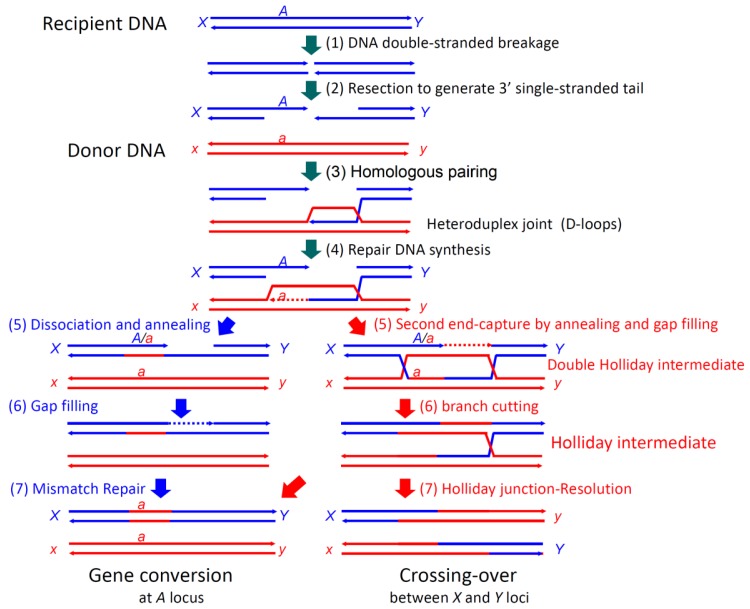Figure 1.
Pathways of homologous recombination. Both sides of a double-stranded break (Step 1) are resected to generate 3′ single-stranded tails at Step 2. At Step 3, the single-stranded tail derived from the first end finds a complementary sequence within the homologous DNA and forms a heteroduplex with a D-loop (homologous pairing), followed by repair synthesis to restore the broken sequence from the paired 3′ single-stranded tail at Step 4. DNA synthesis replaces the parental DNA strand to enlarge the D-loop. After Step 5, the double-stranded break-repair pathway is illustrated on the right and the synthesis-dependent strand-annealing (SDSA) pathway is on the left. In the double-stranded break-repair pathway, the second end is captured by annealing with the D-loop at Step 5. The following gap filling and branch migration generate a double-Holliday intermediate. Cleavage of one of the inter-crossed strands leads to the Holliday intermediate at Step 6. At Step 7, the Holliday intermediate can be resolved in two ways, by cutting either the outer strands, to generate the crossing-over product, or the inter-crossed strands, to generate the gene conversion product after mismatch repair. In the SDSA pathway, the synthesized strand is dissociated from the double-stranded DNA and anneals with the second end at Step 5, followed by gap filling (Step 6) and mismatch repair (Step 7) to generate only a gene conversion product. A and a, X and x, and Y and y are alleles at the A, X and Y loci, respectively.

